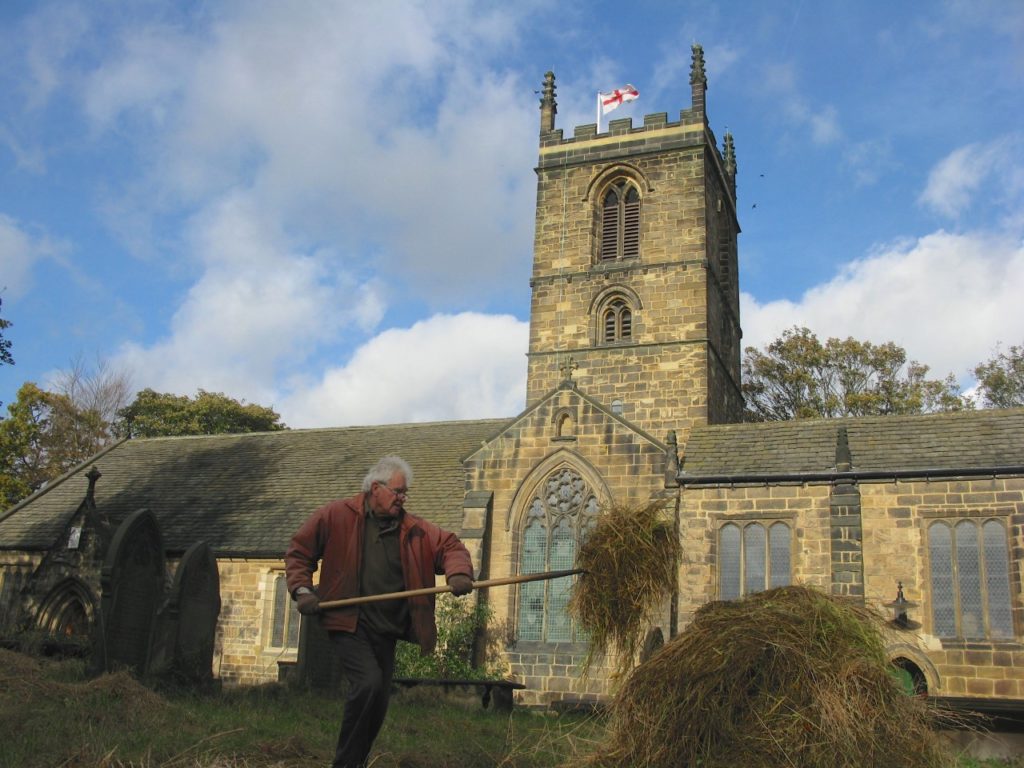St Helen’s Church, first mentioned in the Domesday Book in 1186, was rebuilt in the 14th Century in the Decorated style. The Tower was raised a further storey around 1500 and houses a 200 year old ring of 6 bells. The Waterton Chapel once owned by the family of the Naturalist Charles Waterton was added at the same time. There are some fragments of Medieval glass and some fine examples of Victorian Stained Glass. Recent alterations have created the Emmaus Community Rooms and a Parish Office at the East end of the Church, which can be accessed through the Green Door further down the path.
Traditional and Contemporary Worship takes place every Sunday, with provision for all ages. During the week the church serves the community is a variety of ways, including the popular Spring Shop and Cafe, Oasis Ministry for the elderly, Christians against Poverty debt relief, as well as with Baptisms, Weddings and Funerals, which can be organised through the Parish Office. Our aim is to bring Jesus Christ to all generations and to encourage everyone we meet and serve in their life and faith.
Sandal Churchyard is a place of great historic significance as well as a haven for wildlife. With 3 1/2 acres it is one of the largest Churchyards still open for burials in the United kingdom. Table tombs date back to the 1650s. The marble tombs of the Fernandez family, the extravagant gravestones of the Victorian era, the Pilkington family plot, the tomb of Edward Green Baronet, MP and his Engineering family can all be discovered. Sixteen war graves are maintained with the help of the War Graves Commission.
The Churchyard has some statuesque trees; a Beech tree dating back to 1754 overshadows the East end of the Church, and there are magnificent specimens of Copper Beech, Ash and Chestnut. Because of the vigorous growth of grasses, flowers are scarce, but there are drifts of snowdrops, daffodils, bluebells and primroses in Spring, and Solomon’s Seal, Scabious, Borage, and Red Campion in the Summer. Voles, Shrews and Stoats thrive in the long grass.
Woodpeckers can frequently be heard and seen, alongside tawny owls and pipistrelle bats in the evening. Birds include Nuthatch, Chiffchaff, Song Thrush, Whitethroat and Wren. Eleven species of Butterfly have been observed, including Peacock, Painted Lady and Holly Blue. The Churchyard provides a unique habitat in the Sandal area and we strive to maintain a balance between keeping it tidy and enabling wildlife to flourish.
Our policy is to keep the paths and more recent burial areas mown regularly, and to mow the whole Churchyard every year. This task is undertaken by a dedicated team of volunteers during the summer months. The creation of weatherproof paths and the adjacent Car Park shared with the Guy Salmon Garage, have improved access.
The Tree of Life Memorial Garden for the interment of ashes is a unique and beautifully crafted addition to the landscape, blending art and design in a poetic and practical way.

